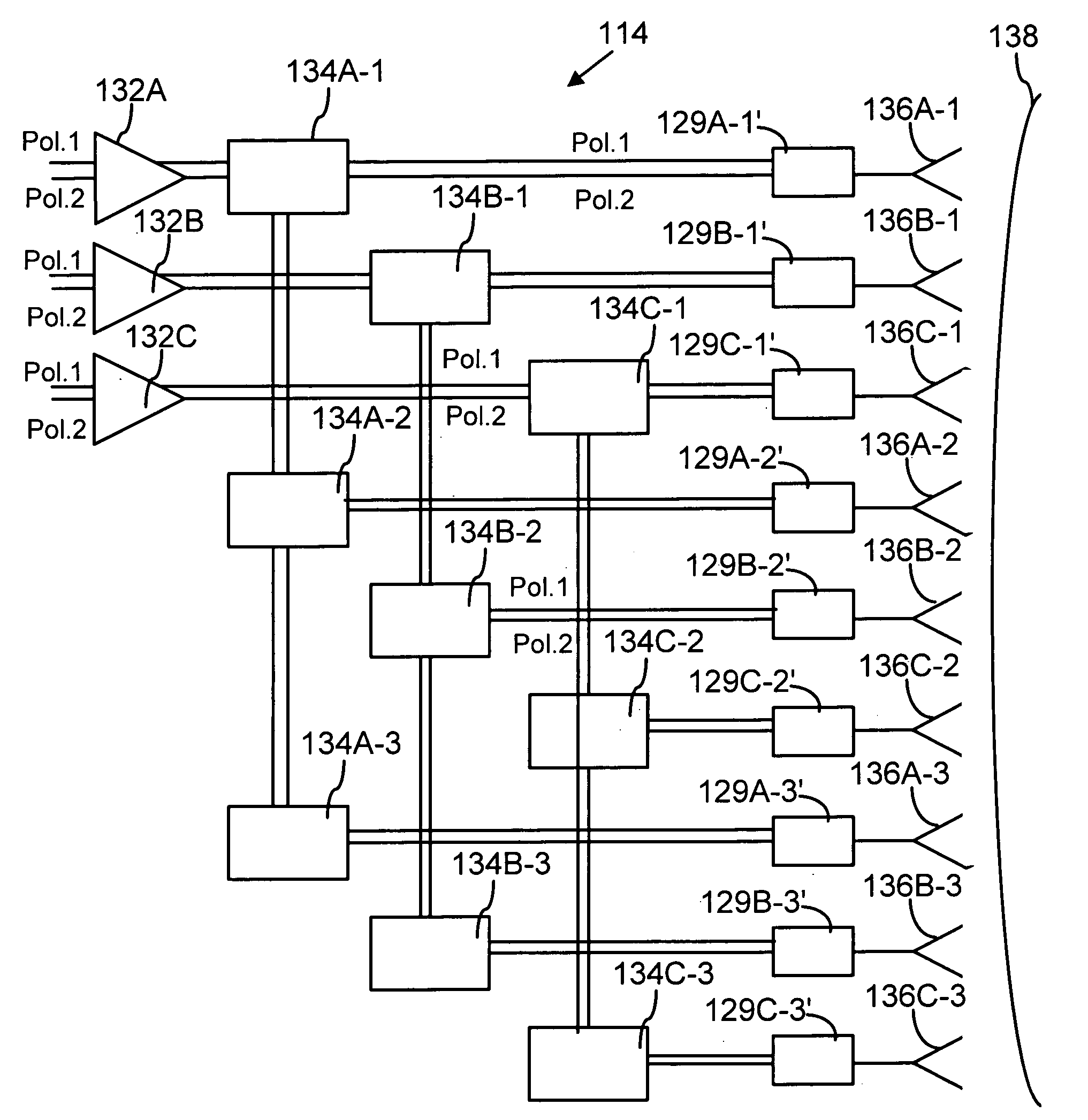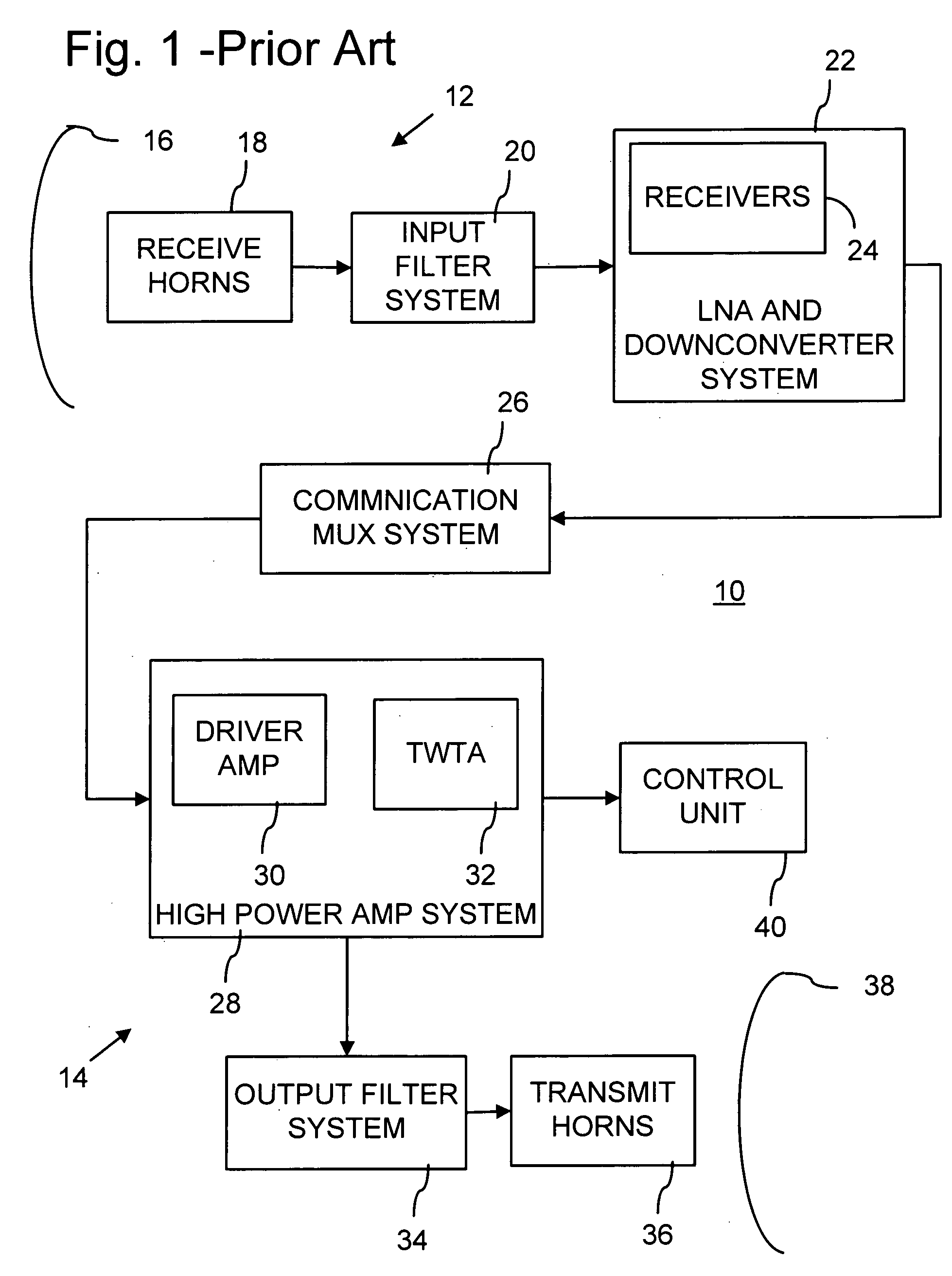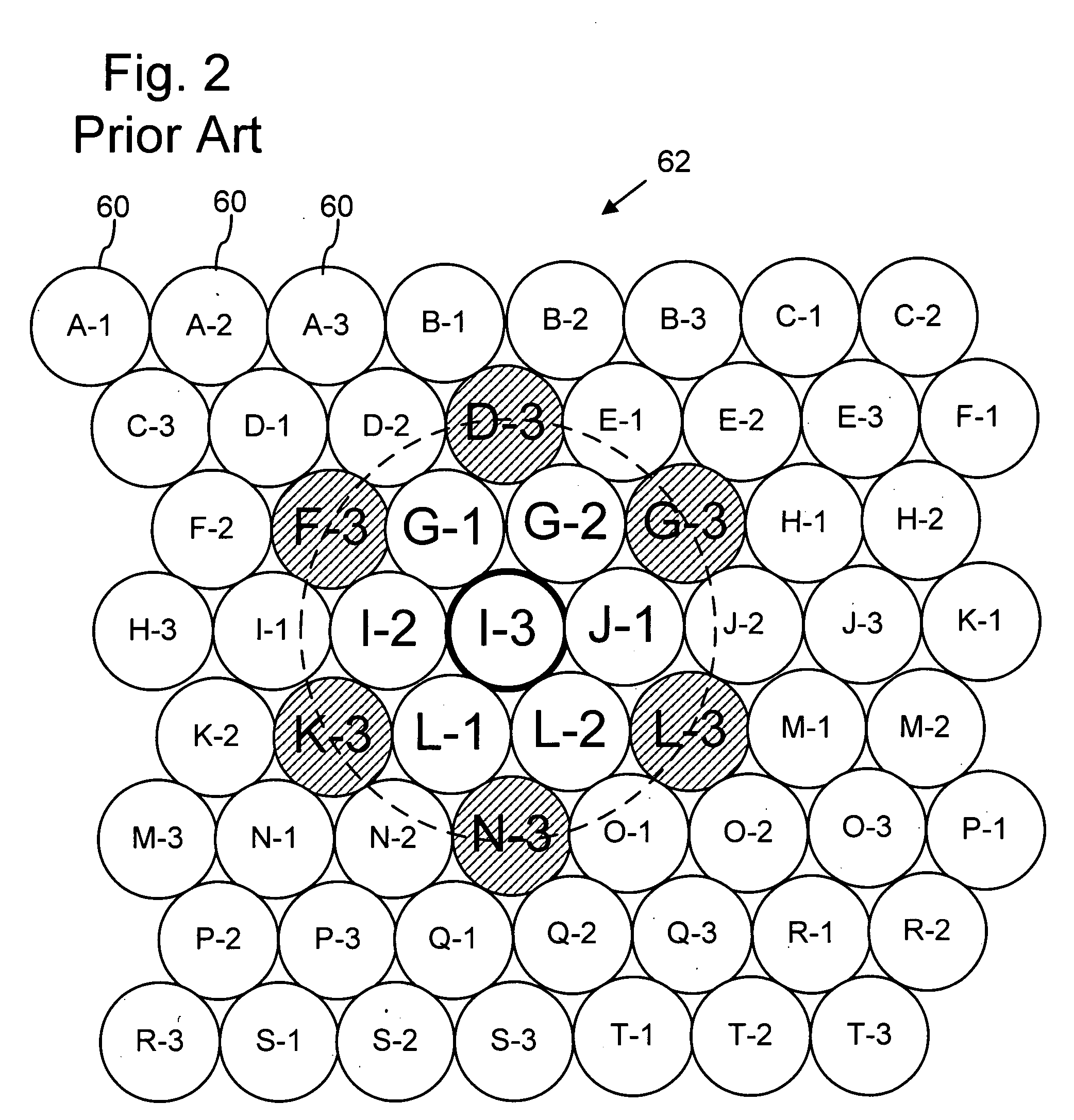Offset satellite communication cell arrays with orthogonal polarizations
- Summary
- Abstract
- Description
- Claims
- Application Information
AI Technical Summary
Benefits of technology
Problems solved by technology
Method used
Image
Examples
Embodiment Construction
[0017]FIG. 1 is a block diagram of a prior art implementation of a communication satellite 10 for geosynchronous orbit, as described in U.S. Pat. No. 6,275,479 and assigned to Spacecode LLC, the assignee of the present invention. Communication satellite 10 has a communication signal receiving system 12 and a communication signal transmitting system 14. Receiving system 12 includes a satellite receiving reflector 16 that receives multiple communication uplink signals from one or more terrestrial transmitting stations and concentrates the signals at corresponding ones of multiple receiving horns 18. Receiving horns 18 pass the communication uplink signals through an input filter system 20 to a satellite low noise amplifier (LNA) and downconverter system 22 having multiple individual receivers 24. Each of the uplink communication signals may include multiple separate signals.
[0018] Low noise amplifier (LNA) and downconverter system 22 would typically include more individual receivers ...
PUM
 Login to View More
Login to View More Abstract
Description
Claims
Application Information
 Login to View More
Login to View More - R&D
- Intellectual Property
- Life Sciences
- Materials
- Tech Scout
- Unparalleled Data Quality
- Higher Quality Content
- 60% Fewer Hallucinations
Browse by: Latest US Patents, China's latest patents, Technical Efficacy Thesaurus, Application Domain, Technology Topic, Popular Technical Reports.
© 2025 PatSnap. All rights reserved.Legal|Privacy policy|Modern Slavery Act Transparency Statement|Sitemap|About US| Contact US: help@patsnap.com



